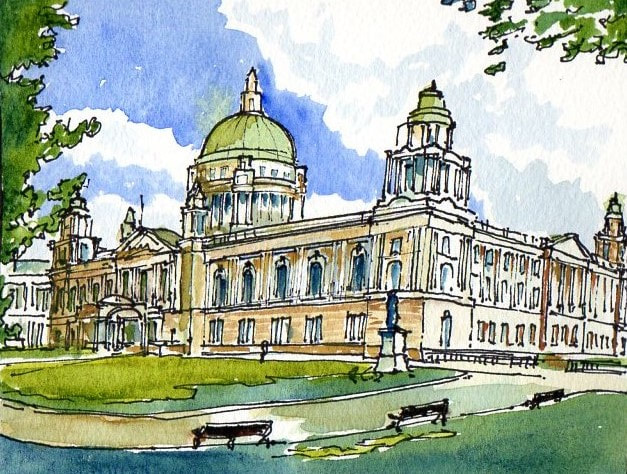Lets start at City Hall constructed between 1896 and 1906. This is a highly decorative classical building built in the Edwardian reriod and is reflective of the prosperity of the city at that time. Used as an inspiration for the similar Cape Town City Hall it was a consiously Imperial building surounded by statues of citizens some of which had made a significant contribution to the Empire. The hall was used as the seat of the Northern Ireland Parliament prior to the erection of the Parliament Buildings at Stormont in the 1920's and it received a direct hit during the Belfast Blitz in 1941. It was later repaired to the original specification. Closed to the public during the Troubles it reopened to tours in 1991 and today houses many civic events and a very nice cafe.
|
|
|


